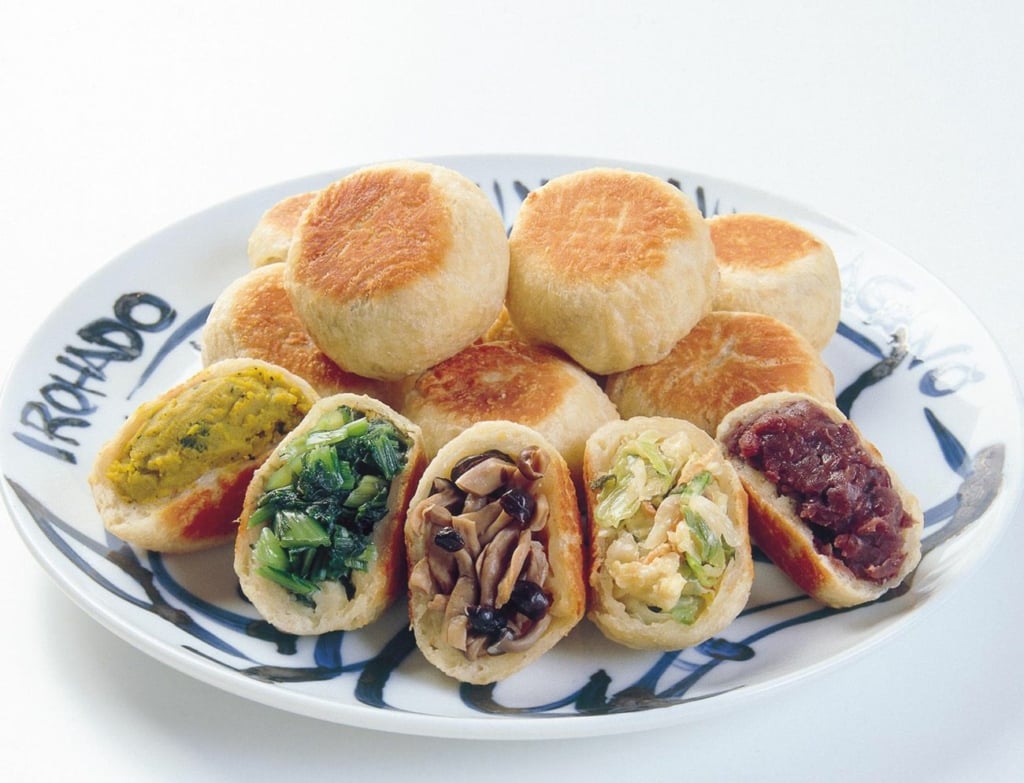
In this guide, I take a look at the famous foods of Nagano prefecture.
Nagano has a huge agricultural industry, and some of the best produce in all of Japan. The prefecture is not connected to the sea, so many of the famous local foods are related to what they can grow locally.
Last week, I posted about Nagano’s most famous food — Shinshu soba (i.e. Nagano soba noodles). Read on for 20 other interesting foods like:
- oyaki (grilled dumplings)
- basahi (horse meat sashimi)
- Shinshu apples
- nozawana (pickled local vegetables)
- and more…
Note: The term “Shinshu” is often used to name Nagano foods. “Shinshu” is simply the name of the old province where modern day Nagano prefecture is.
Let’s get started:
Main dishes
Here are a some dishes and foods that can be eaten as a main course:
Shinshu soba(信州そば)

Nagano’s most famous food is its soba noodles. In fact, the prefecture is considered the birthplace of soba noodles in Japan, with history going back to the Edo period. The climate, soil, and elevation in many parts of the prefecture make it suitable for growing buckwheat. The most famous regional soba dish is Togakushi soba.
Horse meat (馬肉) & Horse meat sashimi – Basahi (馬刺/馬刺し):
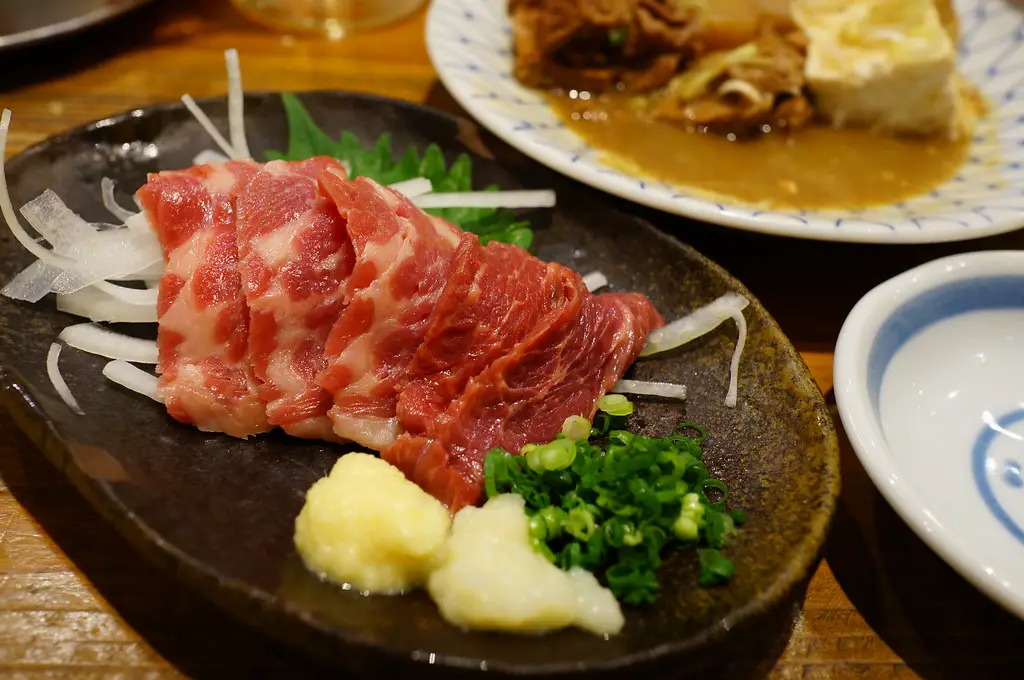
Horse meat?! Yes, horse meat has been eaten in various parts of Japan since ancient times. Nagano is one of the most famous places for horse meat. It is most popularly eaten as a raw dish called basashi (i.e. horse sashimi), but can also commonly be found as grilled / bbq or shabu-shabu dishes. “Otaguri” refers to another dish where the horse’s internal organs (i.e. offal) are stewed in a soy/miso sauce.
Other parts of Japan where horse meat is famous, include Kumamoto and Aomori.
Shinshu Premium Beef (信州プレミアム牛肉)
If horse meat is not your thing, Nagano is also known for high quality beef. “Shinshu premium beef” refers to any beef that has been officially certified by Nagano Prefecture for its quality. It must pass a variety of high standards set out by the prefecture which include the farm’s hygiene and environment standards, as well as the final meat’s marbling/fat content, oleic acid levels, etc.
Only after passing these tests, can the beef be certified as “Shinshu Premium beef”.
“Bandit” fried chicken – Sanzoku-yaki (山賊焼き)
Sanzoku-yaki is chicken that is first marinated in garlic, soy sauce, and onions, then deep fried. Typically chicken thigh is used, although sometimes chicken breast. depending on the shop, some other marinade ingredients like ginger are also used. The name “bandit” was chosen by the restaurant that first invented the dish. The owner thought it was a catchy name. Apparently the owner also looked like a bandit.
Shinshu salmon (信州サーモン)
Despite being far from the sea, Nagano still has one famous seafood — salmon. Shinshu salmon is a farmed salmon that was specifically researched and cultivated by the Nagano Fisheries department for over 10 years. It is actually a mix between two species of trout, not salmon.
Shinshu salmon is known for its soft, melt-in-your-mouth texture, and lack of “fishy” odour or taste. People who typically do not like to eat fish will still like possibly like Shinshu salmon.
Shinshu Miso Ramen (信州味噌ラーメン)
Nagano has the highest miso production volume in all of Japan. Many of Japan’s biggest miso manufacturers are based in Nagano. As a result, there is also a lot of great miso ramen.
Perhaps the most famous is Anyoji ramen(安養寺ラーメン). Anyoji is an ancient temple said to be the birthplace of Shinshu miso. To qualify as Anyoji ramen, ramen broth must use at least 80% Anyoji miso.
Komagane Sauce Katsudon ( 駒ヶ根ソースかつ丼)
“Katsudon” typically refers to a bowl of rice topped with a deep fried pork cutlet cooked in egg. “Komagane sauce katsudon” uses no egg. Instead, the fried pork cutlet is simply dipped into a special sweet and spicy sauce before being served. It originates from Komagane city, hence the name.
Lomen (ローメン)
Lomen is a thick noodle dish that is served in two ways — with soup or stir fried. The other main ingredients of lomen are mutton and cabbage. Another main feature of lomen is that the customer is encouraged to adjust the flavor with various seasonings like chili pepper, garlic, sesame oil, and vinegar.
It seems very similar to yakisoba or ramen, but apparently the flavor is much different. I guess you need to try to find out.
Lomen originated from a Chinese restaurant in Ina City called Banri (ばんり) . (Source)
Oshibori Udon (おしぼりうどん)
Oshibori udon is eaten by dipping the noodles into grated daikon juice seasoned with your choice of miso, bonito flakes, and other condiments. It is very spicy, but also very nutritious and healthy.
The name of the dish comes from the term “shiboru” (搾る), which means “to squeeze” or “to wring (a towel)”. It is a reference to the dipping broth which is made by grating and squeezing juice from local Nezumi Daikon radish.
Thanks very much to our reader Tyler for this knowledge. I originally thought the name was a reference to “oshibori” (お絞り), which means “wet hand towel”. 😂
Oshibori udon originates from Sakaki Town and Chikuma City.
Oidare Yakitori (美味だれ焼き鳥)
Yakitori is a popular Japanese cuisine of skewered chicken pieces grilled over an open flame. “Oidare yakitori” translates to something like “Delicious sauce” yakitori. It is made by pouring soy sauce flavored with plenty of grated garlic over the freshly grilled skewers. Sauce recipes and flavors will differ by restaurant.
Oidare Yakitori was invented in Ueda City.
Mountain Vegetables / Wild Vegetables – Sansai (山菜)
Sansai are wild edible plants that are traditionally picked in the spring after the snow melts. The name literally translates to “mountain vegetables”. Some typical vegetable types include yomogi (よもぎ – Japanese mugwort), seri (せり – Japanese parsley), kogomi (こごみ – ostrich fern), and warabi (わらび – bracken fern)
Wild vegetables taste more bitter than regular vegetables. They are said to help remove toxins from your body and improve your metabolism.
Snacks, Sides & Sweets
Here are some famous side dishes and snack foods found in Nagano prefecture.
Oyaki(おやき/お焼き)

Oyaki is a sort of dumpling that is usually grilled, then baked or steamed. The dough is typically made of a mix of buckwheat flour and wheat flour. The filling can be either sweet or savoury. Some traditional flavours include red bean (adzuki), pumpkin paste, mixed seasonal vegetables and nozawana (pickled vegetables). These days you can also find modern flavours like apple, pizza, and curry. Every oyaki shop in Nagano has their own unique method and/or fillings.
Nozawana pickled vegetables – 野沢菜漬け
Nozawana is a type of leafy vegetable. It was originally cultivated in Nozawa Onsen village (which is also a great ski resort). The vegetable is usually pickled and eaten as a side dish, or used in other foods like oyaki. Nozawana is considered as one of Japan’s three major pickles. Japan loves to make top threes of everything.
Gohei Mochi (五平餅)
Gohei mochi is made by mashing freshly cooked rice (non-glutinous), forming it into a sticky ball, flattening it, then skewering it on a stick. The skewer is then dipped in a miso/shoyu based sauce, and grilled. It’s almost like a rice popsicle.
The shape of the skewer can vary depending on area or shop.
Insects
In some parts of Nagano, it is considered a delicacy to eat various insects, pupae or larvae. For example, zazamushi (ざざ虫) is a popular insect found along the Tenryu river in Ina City. Insects were traditionally seen as a valuable source of protein, as fish/seafood supplies were not plentiful enough due to Nagano’s geographic position. The insects are usually cooked by being deep-fried or stewed in soy sauce. One popular tourist attraction in Lake Suwa is to eat grasshoppers served in soft-serve ice cream (バッタソフト).
Insects are definitely not my thing, but you are free to give it a try!
Milk bread – Gyu-nyu pan (牛乳パン)
Nagano’s gyunyu pan is basically fluffy white bread stuffed with milk cream. It originated around 60 years ago, and has become popular again recently. Another reason for its popularity is the cute retro packaging that is usually used.
Obuse Chestnuts – 小布施(おぶせ) 栗菓子
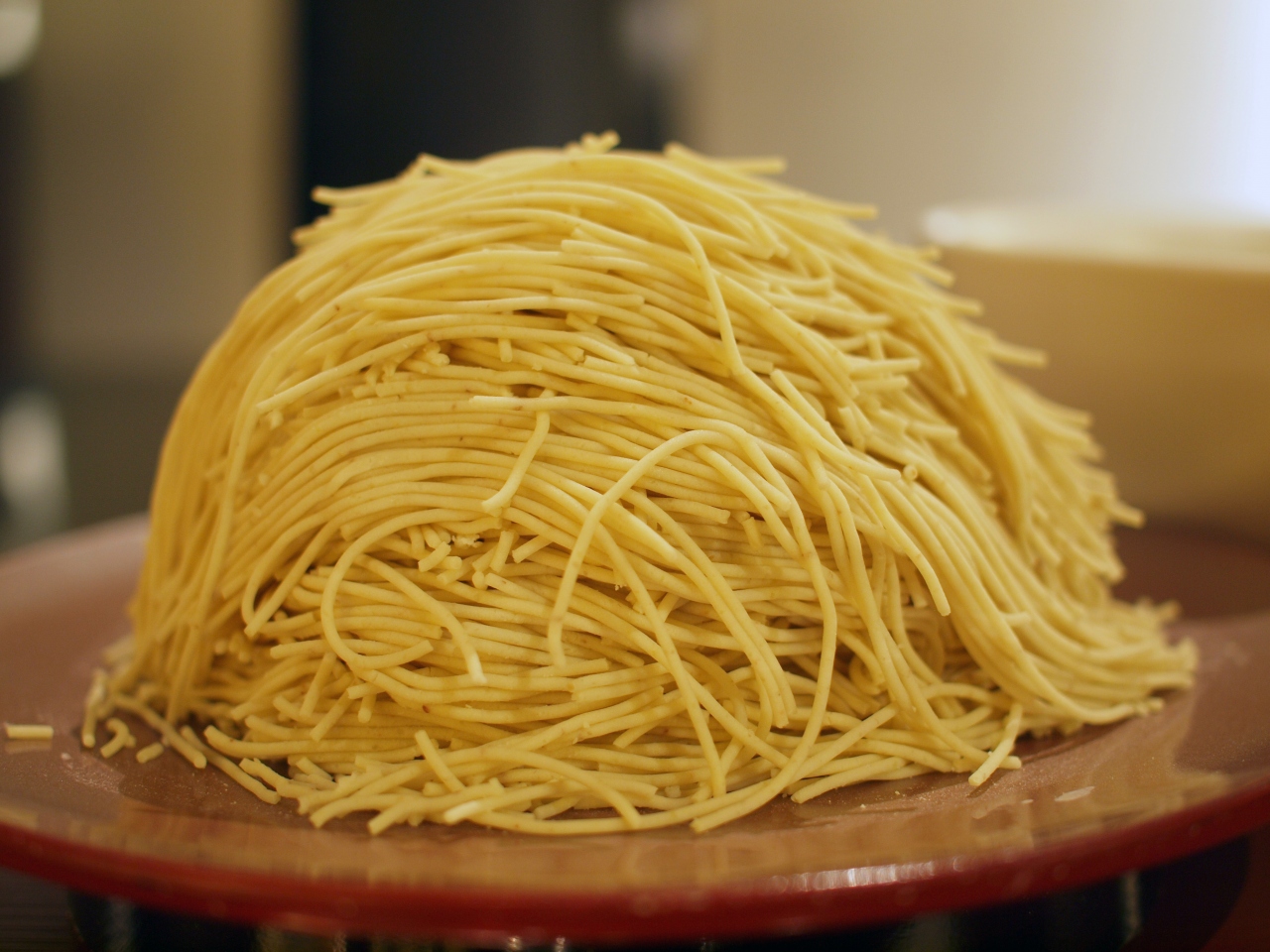
Obuse is a small town in Nagano known for its production of high quality chestnuts. Sweets and desserts made with Obuse chestnuts are famous throughout Japan. There is everything from from cream puffs, “Mont Blancs”, and cream rolls to puddings and ice creams.
Dried Ichida Persimmon (市田柿)
Nagano is Japan’s number one producer of dried persimmons. “Ichida” persimmon accounts for more than 95% of total production.
Ichida persimmons are best known for their beautiful color, mild sweetness and unique chewy texture. After being dried, they are often eaten directly, or used to make other confectionary products, snacks and desserts. They are a very popular souvenir gift.
Ichida persimmons are mainly grown in the Iida and Shimoina regions of Nagano.
Shinshu Apples (信州りんご)

Apart from soba, Nagano’s most famous food product is probably apples! In fact, the prefecture’s mascot is a bear with an apple head.
The prefecture’s climate, and soil conditions make it ideal for growing apples. As a result, Nagano produces the second highest volume of apples in all of Japan (behind Aomori).
There are a huge variety of Shinshu apples (too many to list). Overall, they are known for being sweeter and more delicious than other apples in Japan. You can find a huge variety of apple-based products throughout Nagano like apple jam, apple juice, apple chocolate, apple pies/pastries, and more. There is even “apple shinshu beef”, which refers to beef from cows that were raised on a diet of Shinshu apples!
Spices & Condiments
Shichimi Togarashi(七味唐辛子)
Shichimi Togarashi is a common Japanese seasoning made of a blend of seven different spices/ingredients. The blend of spices depends on the brand/shop that makes it. One of the most famous shichimi brands in all of Japan is called Yawataya, and is from Nagano. Six out of the seven ingredients used are sourced locally from Nagano. The company started in 1736, and they still have a shop at the original location in Zenkoji Temple.
Azumino Wasabi (安曇野わさび)
Nagano is one of the biggest producers of wasabi in Japan. Most come from the city of Azumino. You can get raw wasabi, as well as various wasabi related products there.
If you have never had freshly grated wasabi, then you definitely need to try. It’s an eye-opening experience.
Summary
Nagano is one of the most important agricultural areas of Japan. As a result, you can find a huge variety of famous foods throughout the prefecture. From soba noodles to apples and beef.
This list of 21 items is far from exhaustive, and I’m sure I will add more to it in the future.
I will also be spending the next few months in Nagano, so hope to try as many foods as I can!
Let me know in the comments:
Have you tried any of Nagano’s famous foods? What’s your favourite?
Subscribe for free today! Receive cool recipes, my latest Japanese knife picks and learn about Japanese culture. Delivered every other week to your inbox.
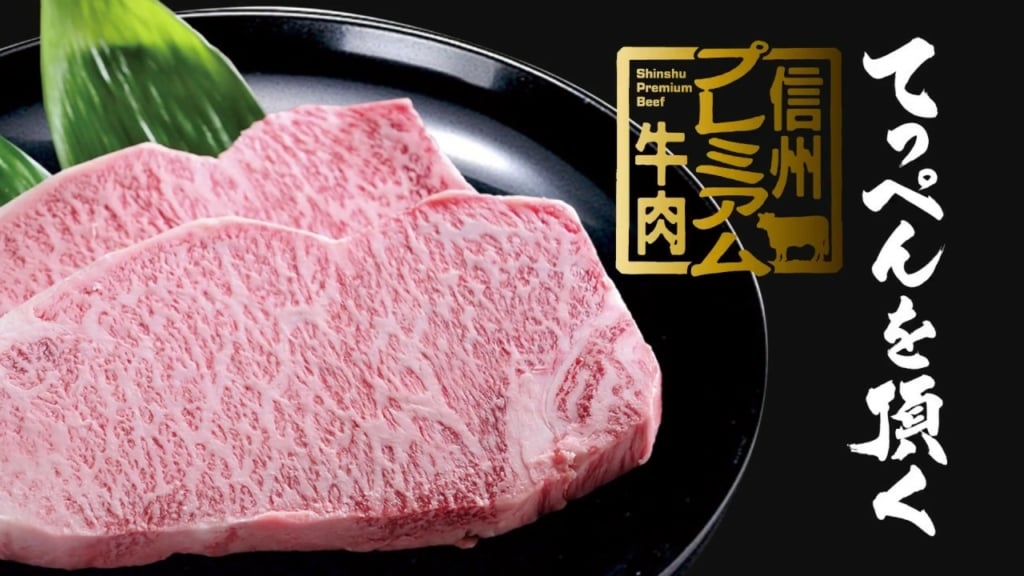
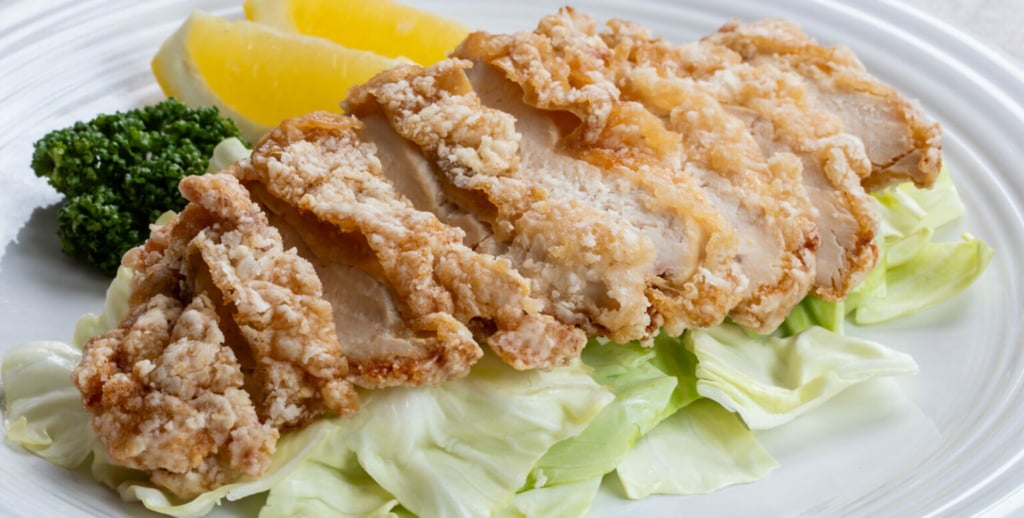
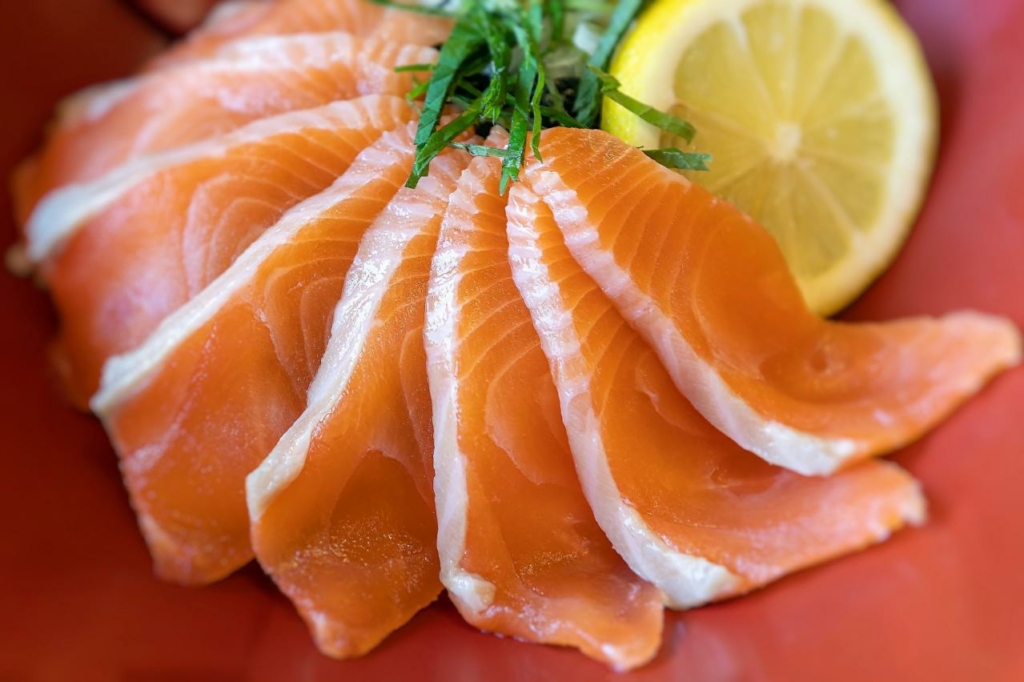
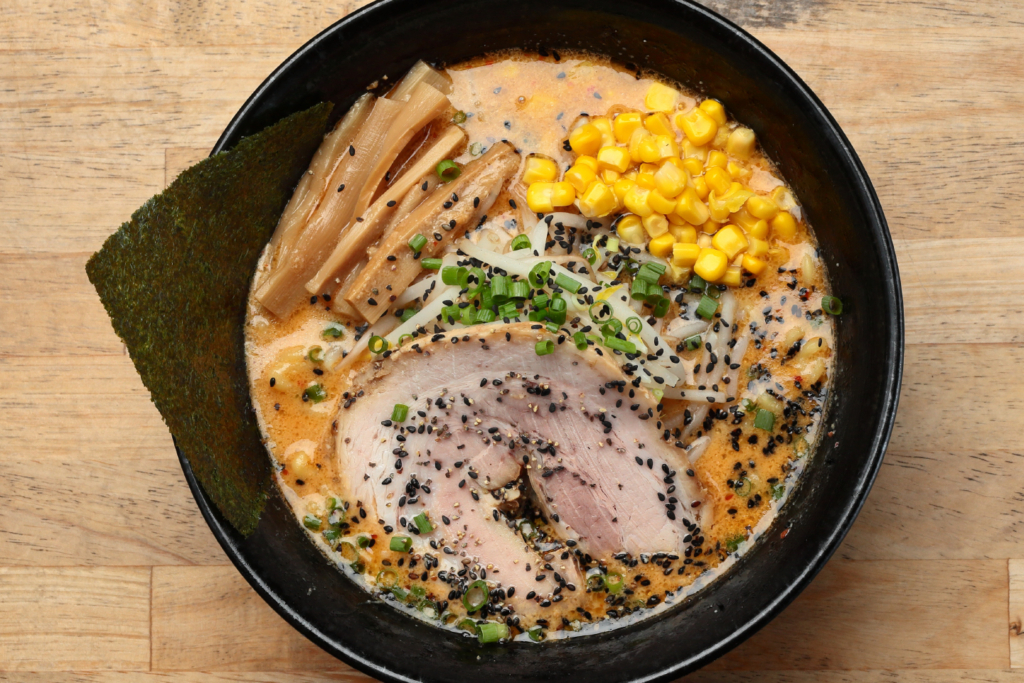
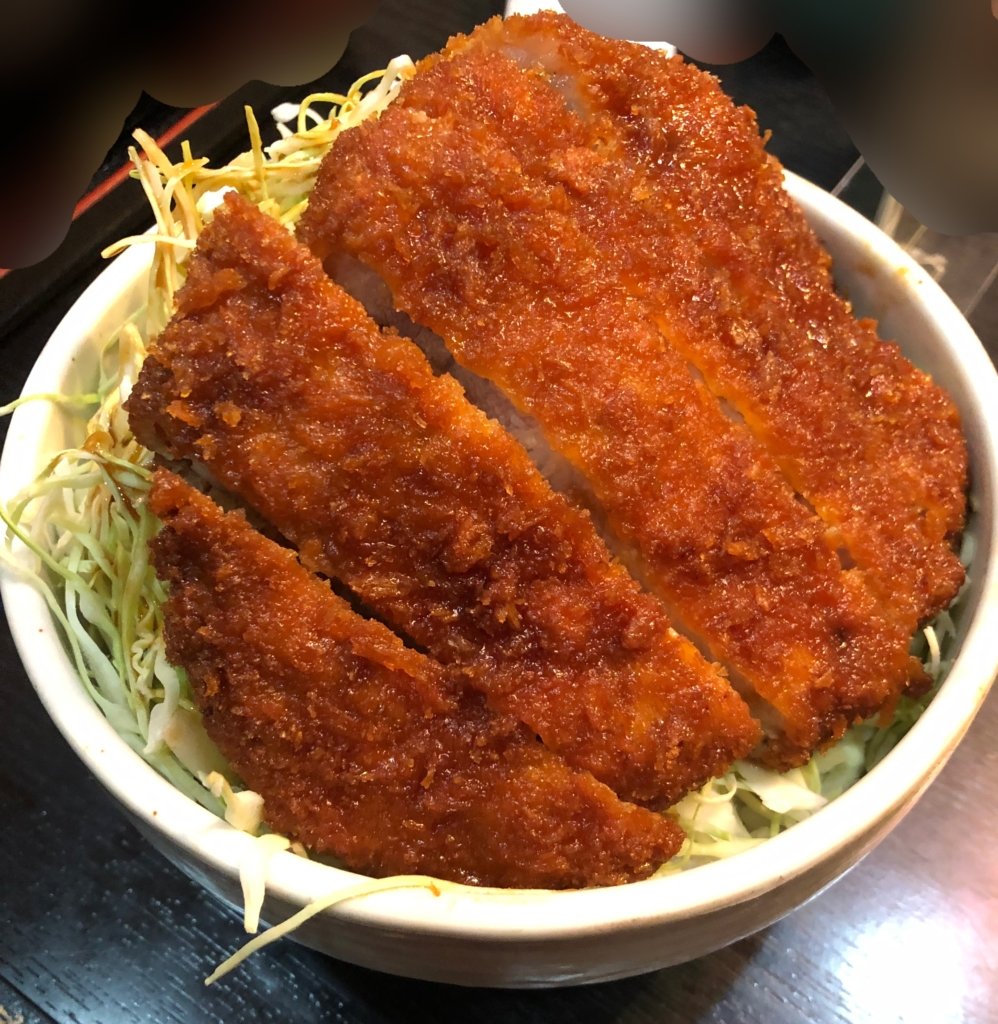
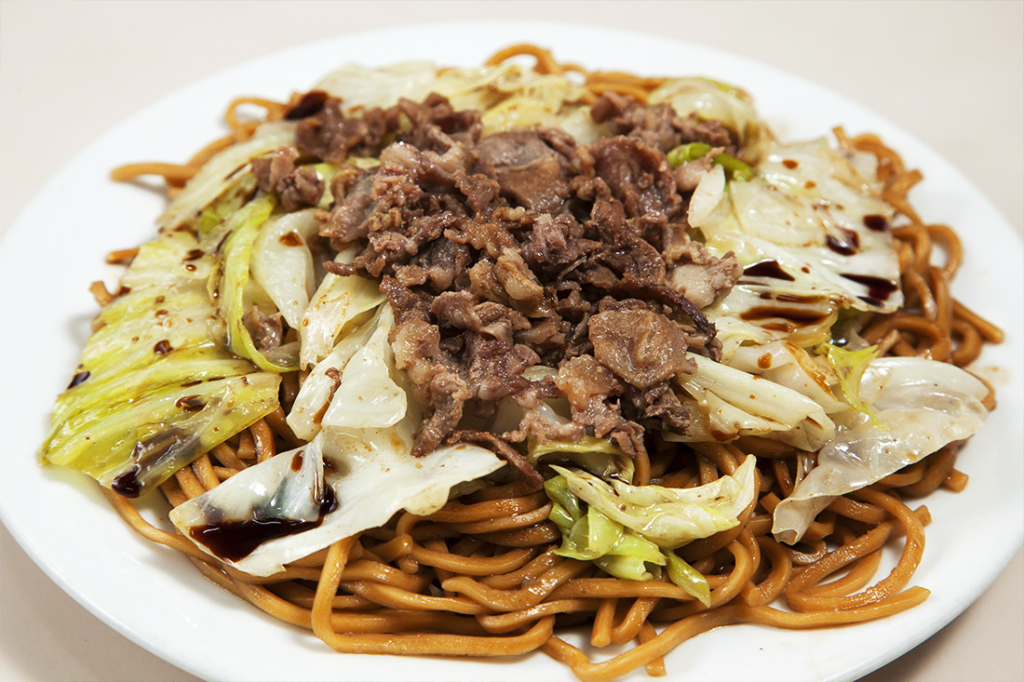
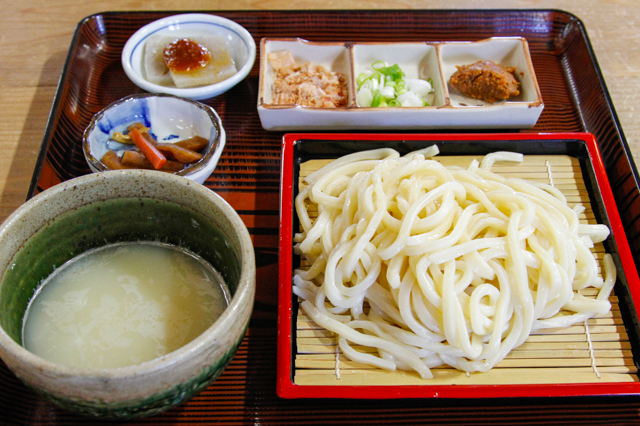
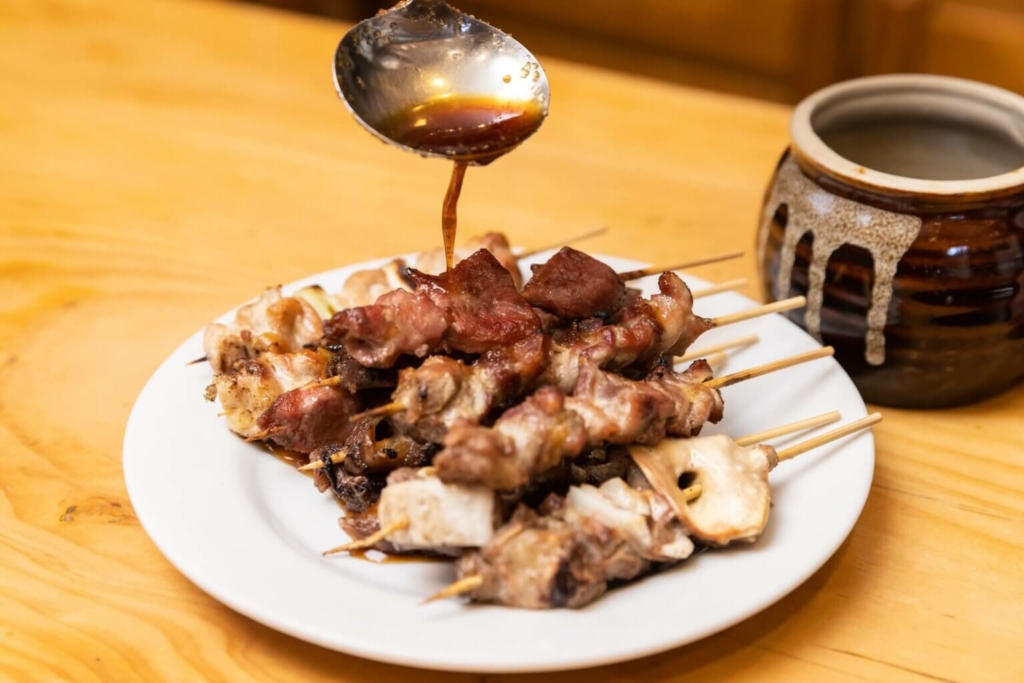
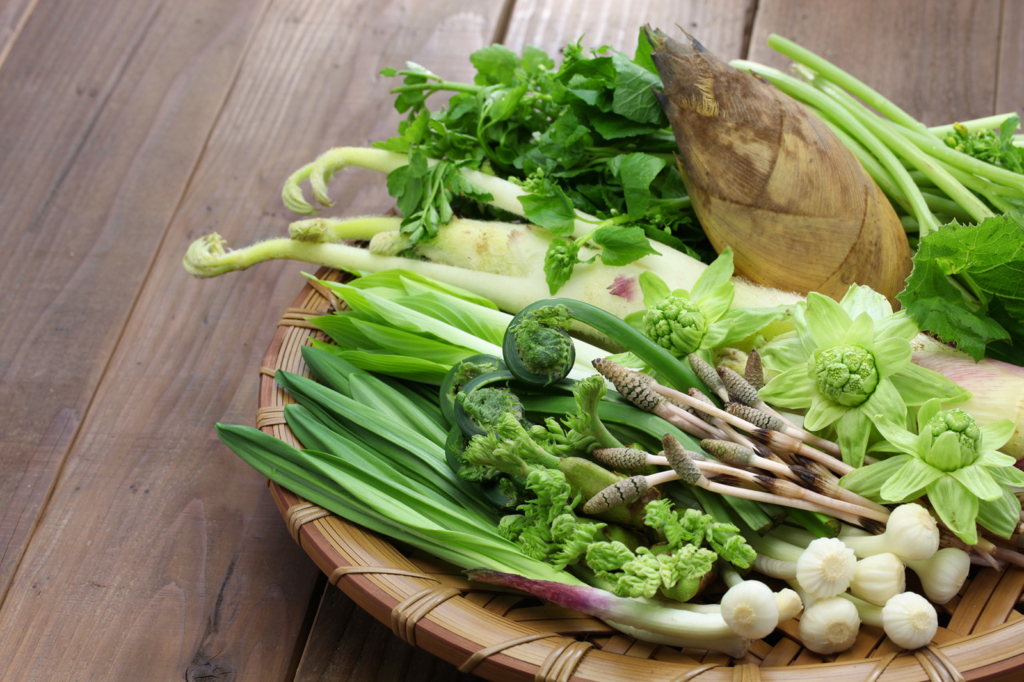
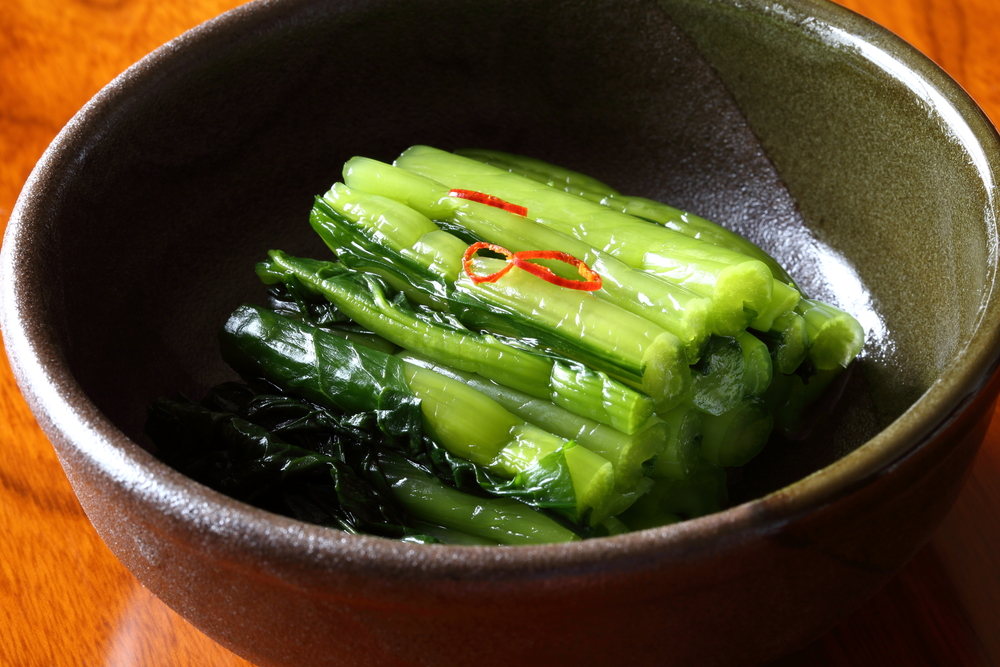
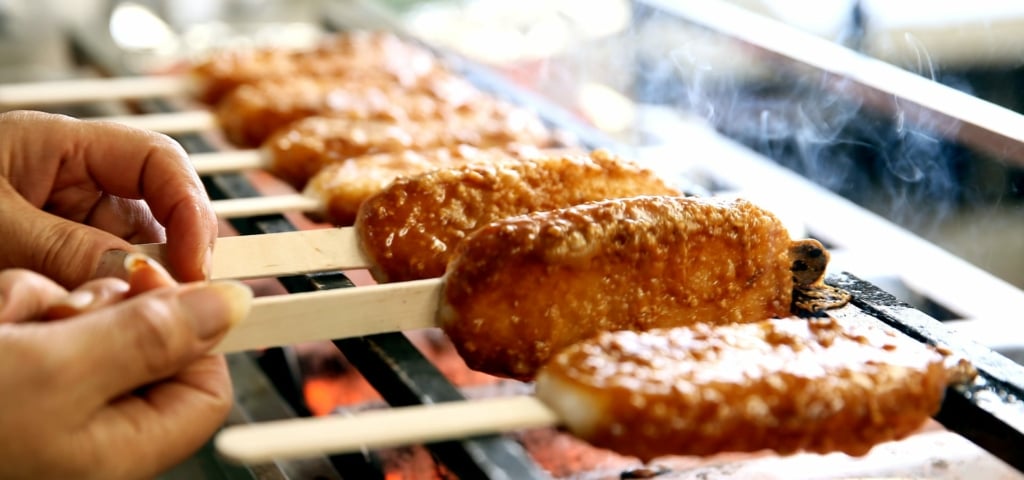
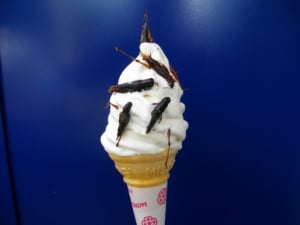
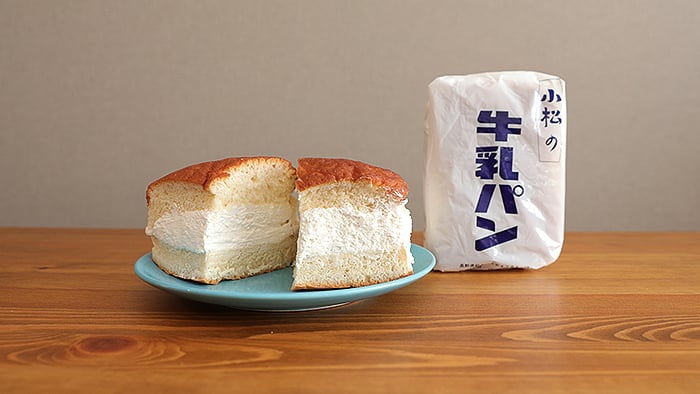
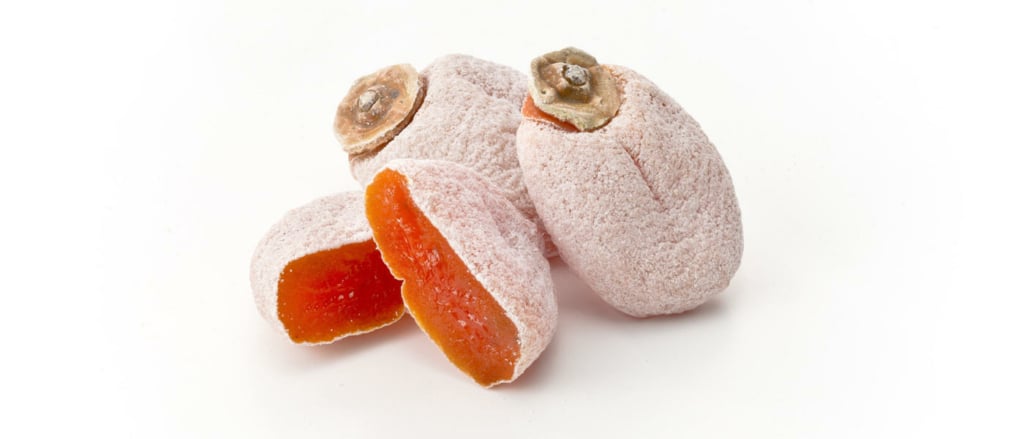
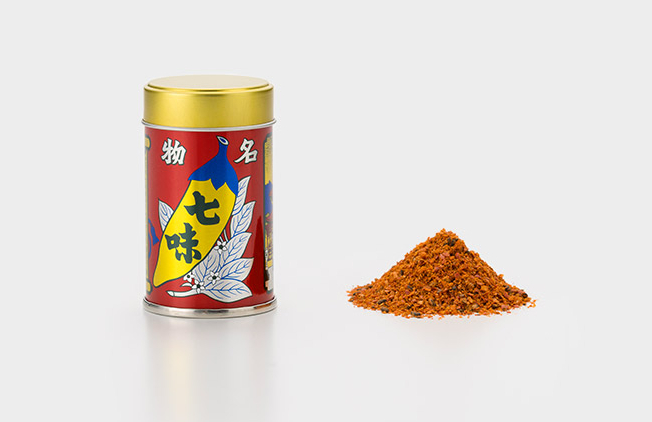
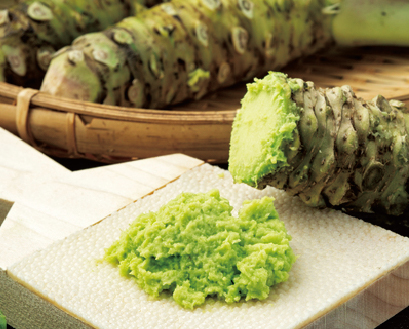

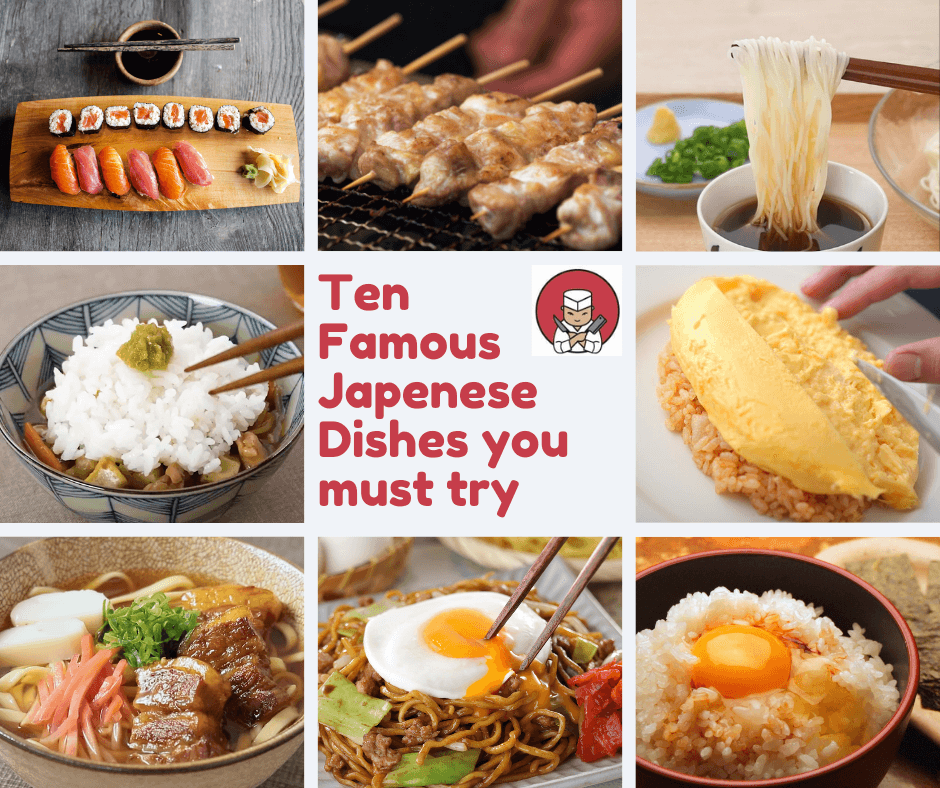
I came across this article when researching Komagane Sauce Katsudon. Very entertaining and informative article. If I may make one clarification: For “Oshibori Udon”, “oshibori” is indeed the wet hand towel you get at meals. However, in this case, it refers to “shiboru” meaning “squeeze”. The dipping broth for the udon noodles is made by taking a local Nezumi Daikon spicy radish, grating it, and squeezing the broth out. Then you add miso paste to tame down the spiciness and then dip the udon noodles in it. Just wouldn’t want your readers be turned off by the idea of eating a cloth towel. LOL